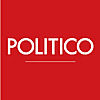ARTICLE AD BOX
THE HAGUE, Netherlands — The setting is stately, the schedule is tight, and the goal, if you ask European officials, is simple: Keep it short, keep it smooth — and keep Donald Trump from blowing it up.
That’s the mood as NATO leaders descend on The Hague for a two-day summit designed less for big strategy than careful stage management. It’s the U.S. president’s first return to the alliance table since 2019, and officials are openly hoping that his brief visit — less than 24 hours on the ground — is uneventful.
The stakes are high, and not just because of what might happen given Trump’s notorious unpredictability. A dramatic escalation in the Middle East — following U.S. and Israeli strikes on Iranian nuclear facilities — has cast a shadow over the meeting. The crisis isn’t on the official agenda, but it’s already dominating the private chatter.
“Iran is going to be a big deal at the summit,” one European diplomat said. “It’s not a NATO topic per se, but leaders are going to want to talk to Trump about it.”
For most allies, the focus is on diplomatic footwork.
“What does Trump want?” asked Camille Grand, a former NATO assistant secretary-general. “He hasn’t been included in a NATO summit since 2019, and it’s hard to know what he really wants.” To keep things predictable, the summit has been built around a one-page communiqué, a single working session and a royal dinner. No drawn-out press conferences. Even fewer surprises.
The main goal of the summit was to press member countries to boost their defense spending, but even that’s been sewn up ahead of time.
Trump wanted the target raised from at least 2 percent of gross domestic product to 5 percent, and that was agreed over the weekend. By 2035, allies will spend 3.5 percent of their GDP on “hard defense” items like weapons and troops, and an additional 1.5 percent on defense-related investments like cybersecurity and military mobility.
The one wrinkle is a supposed opt-out obtained by Spain.
 NATO will, in one way or another, reaffirm its support for Kyiv and point to a new Ukraine-NATO Council at the foreign-minister level on Tuesday. | Robin Van Lonkhuijsen/EPA
NATO will, in one way or another, reaffirm its support for Kyiv and point to a new Ukraine-NATO Council at the foreign-minister level on Tuesday. | Robin Van Lonkhuijsen/EPAU.S. Ambassador to NATO Matthew Whitaker credited Trump with dragging the alliance to the 5 percent threshold: “Thanks to the bold leadership of President Donald J. Trump, NATO is on track to achieve a historic commitment,” he said Monday.
The minimalist approach has also affected how the alliance is handling Ukraine. President Volodymyr Zelenskyy is expected to be at the dinner Tuesday night — a nod to his central role — but he’s not invited to Wednesday’s closed-door leaders’ session. That’s a big change from earlier summits when the alliance locked arms with Zelenskyy in the wake of Russia’s full-scale invasion.
But Trump’s antipathy toward the Ukrainian president now makes that untenable.
NATO will, in one way or another, reaffirm its support for Kyiv and point to a new Ukraine-NATO Council at the foreign-minister level on Tuesday. Aid to Ukraine will now count toward national defense spending, a symbolic win. But there’s no talk of membership timelines or expanded guarantees, despite a statement that Ukraine’s eventual path to join NATO is still “irreversible” — and that’s not lost on anyone.
“It is a good path that has been found, under the current circumstances, to give the Ukraine issue a prominent place at this summit,” a senior German official said. “Even more important is that the final declaration includes the continued support of NATO partners for Ukraine. That was important to us — we wanted to agree on that among the 32, not in smaller formats.”
In the end, this summit may not be judged by what it accomplishes, but for avoiding Trump’s storming out of the alliance. That, at least, is the plan.
Laura Kayali, Paul McLeary, Victor Jack and Nette Nöstlinger contributed to this report.
.png)
 5 hours ago
1
5 hours ago
1








 English (US)
English (US)